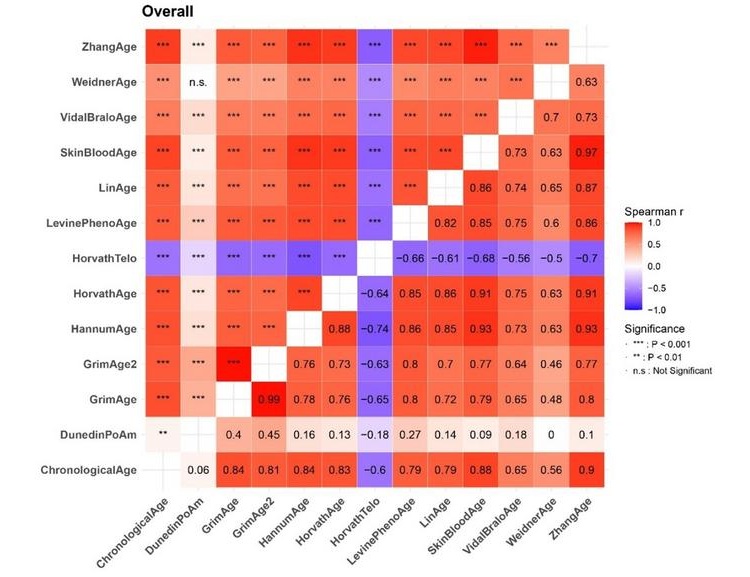Differential Gene Expression Aids Disseminated Tumor Cells Adapt to Diverse Microenvironments
|
By LabMedica International staff writers Posted on 09 Nov 2015 |
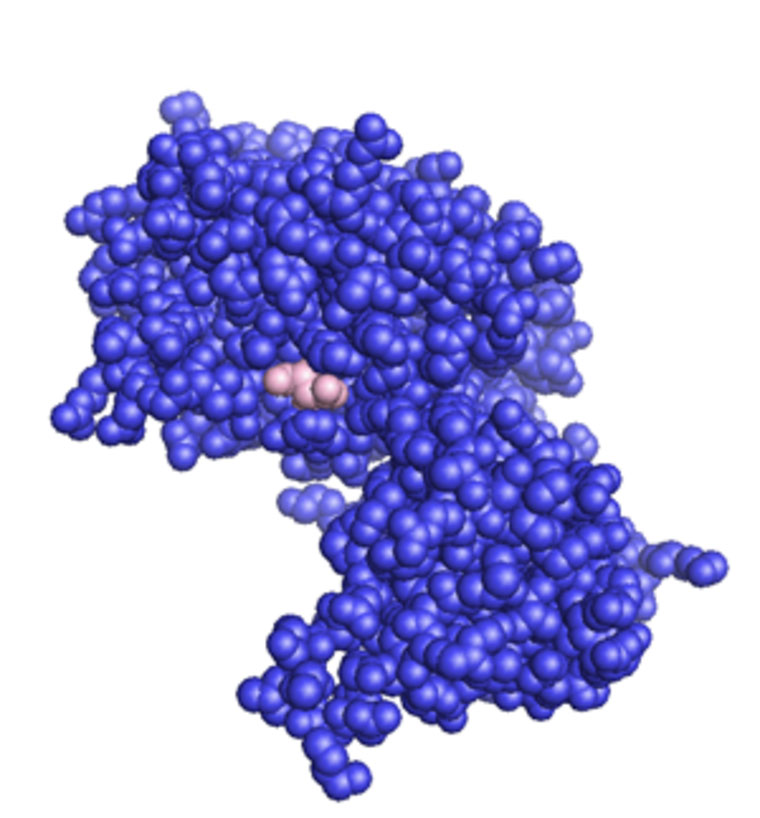
Image: A space-filling model of the PTEN protein (blue) complexed with tartaric acid (brown) (Photo courtesy of Wikimedia Commons).
A recent paper described how cancer cells that have broken away from a primary tumor are able to establish the conditions they need to survive in a distant site that possesses a quite different microenvironment.
Investigators at the University of Notre Dame (South Bend, IN, USA) and at the University of Texas MD Anderson Cancer Center (Houston, USA) reported in the October 19, 2015, online edition of the journal Nature that the ability of disseminated tumor cells to establish themselves in distant locations was dependent on expressing or silencing the tumor suppressor gene PTEN.
PTEN (phosphatase and tensin homolog) is one of the most commonly lost tumor suppressors in human cancer. During tumor development, mutations and deletions of PTEN occur that inactivate its enzymatic activity leading to increased cell proliferation and reduced cell death. Frequent genetic inactivation of PTEN occurs in glioblastoma, endometrial cancer, prostate cancer, and reduced expression is found in many other tumor types such as lung and breast cancer. When the PTEN enzyme is functioning properly, it acts as part of a chemical pathway that signals cells to stop dividing and causes cells to undergo programmed cell death (apoptosis) when necessary. These functions prevent uncontrolled cell growth that can lead to the formation of tumors. There is also evidence that the protein made by the PTEN gene may play a role in both cell movement and adhesion of cells to surrounding tissues.
The investigators found that both human and mouse tumor cells with normal expression of PTEN lost expression of this gene after dissemination to the brain, but not to other organs. The PTEN level in PTEN-loss brain metastatic tumor cells was restored after leaving the brain microenvironment. This brain microenvironment-dependent, reversible PTEN messenger RNA and protein downregulation was epigenetically regulated by microRNAs from brain astrocytes.
Astrocyte-derived exosomes mediated an intercellular transfer of PTEN-targeting microRNAs to metastatic tumor cells, while astrocyte-specific depletion of PTEN-targeting microRNAs or blockade of astrocyte exosome secretion rescued the PTEN loss and suppressed brain metastasis in vivo. This adaptive PTEN loss in brain metastatic tumor cells led to an increased secretion of the chemokine CCL2, which recruited myeloid cells that reciprocally enhanced the outgrowth of brain metastatic tumor cells via enhanced proliferation and reduced apoptosis.
Contributing author Dr. Siyuan Zhang, professor of cancer research at Notre Dame University, said, "The microenvironment has tremendous impact on how the gene is expressed, what type of gene will be expressed. It is definitely not due to genetic mutation. The point of this paper is we should not overlook the huge influence of the tissue architecture, the tissue environment, the tissue composition. It is a dynamic process."
Related Links:
University of Notre Dame
University of Texas MD Anderson Cancer Center
Investigators at the University of Notre Dame (South Bend, IN, USA) and at the University of Texas MD Anderson Cancer Center (Houston, USA) reported in the October 19, 2015, online edition of the journal Nature that the ability of disseminated tumor cells to establish themselves in distant locations was dependent on expressing or silencing the tumor suppressor gene PTEN.
PTEN (phosphatase and tensin homolog) is one of the most commonly lost tumor suppressors in human cancer. During tumor development, mutations and deletions of PTEN occur that inactivate its enzymatic activity leading to increased cell proliferation and reduced cell death. Frequent genetic inactivation of PTEN occurs in glioblastoma, endometrial cancer, prostate cancer, and reduced expression is found in many other tumor types such as lung and breast cancer. When the PTEN enzyme is functioning properly, it acts as part of a chemical pathway that signals cells to stop dividing and causes cells to undergo programmed cell death (apoptosis) when necessary. These functions prevent uncontrolled cell growth that can lead to the formation of tumors. There is also evidence that the protein made by the PTEN gene may play a role in both cell movement and adhesion of cells to surrounding tissues.
The investigators found that both human and mouse tumor cells with normal expression of PTEN lost expression of this gene after dissemination to the brain, but not to other organs. The PTEN level in PTEN-loss brain metastatic tumor cells was restored after leaving the brain microenvironment. This brain microenvironment-dependent, reversible PTEN messenger RNA and protein downregulation was epigenetically regulated by microRNAs from brain astrocytes.
Astrocyte-derived exosomes mediated an intercellular transfer of PTEN-targeting microRNAs to metastatic tumor cells, while astrocyte-specific depletion of PTEN-targeting microRNAs or blockade of astrocyte exosome secretion rescued the PTEN loss and suppressed brain metastasis in vivo. This adaptive PTEN loss in brain metastatic tumor cells led to an increased secretion of the chemokine CCL2, which recruited myeloid cells that reciprocally enhanced the outgrowth of brain metastatic tumor cells via enhanced proliferation and reduced apoptosis.
Contributing author Dr. Siyuan Zhang, professor of cancer research at Notre Dame University, said, "The microenvironment has tremendous impact on how the gene is expressed, what type of gene will be expressed. It is definitely not due to genetic mutation. The point of this paper is we should not overlook the huge influence of the tissue architecture, the tissue environment, the tissue composition. It is a dynamic process."
Related Links:
University of Notre Dame
University of Texas MD Anderson Cancer Center
Latest BioResearch News
- Genome Analysis Predicts Likelihood of Neurodisability in Oxygen-Deprived Newborns
- Gene Panel Predicts Disease Progession for Patients with B-cell Lymphoma
- New Method Simplifies Preparation of Tumor Genomic DNA Libraries
- New Tool Developed for Diagnosis of Chronic HBV Infection
- Panel of Genetic Loci Accurately Predicts Risk of Developing Gout
- Disrupted TGFB Signaling Linked to Increased Cancer-Related Bacteria
- Gene Fusion Protein Proposed as Prostate Cancer Biomarker
- NIV Test to Diagnose and Monitor Vascular Complications in Diabetes
- Semen Exosome MicroRNA Proves Biomarker for Prostate Cancer
- Genetic Loci Link Plasma Lipid Levels to CVD Risk
- Newly Identified Gene Network Aids in Early Diagnosis of Autism Spectrum Disorder
- Link Confirmed between Living in Poverty and Developing Diseases
- Genomic Study Identifies Kidney Disease Loci in Type I Diabetes Patients
- Liquid Biopsy More Effective for Analyzing Tumor Drug Resistance Mutations
- New Liquid Biopsy Assay Reveals Host-Pathogen Interactions
- Method Developed for Enriching Trophoblast Population in Samples
Channels
Clinical Chemistry
view channel
New Clinical Chemistry Analyzer Designed to Meet Growing Demands of Modern Labs
A new clinical chemistry analyzer is designed to provide outstanding performance and maximum efficiency, without compromising affordability, to meet the growing demands of modern laboratories.... Read more
New Reference Measurement Procedure Standardizes Nucleic Acid Amplification Test Results
Nucleic acid amplification tests (NAATs) play a key role in diagnosing a wide range of infectious diseases. These tests are generally known for their high sensitivity and specificity, and they can be developed... Read moreMolecular Diagnostics
view channel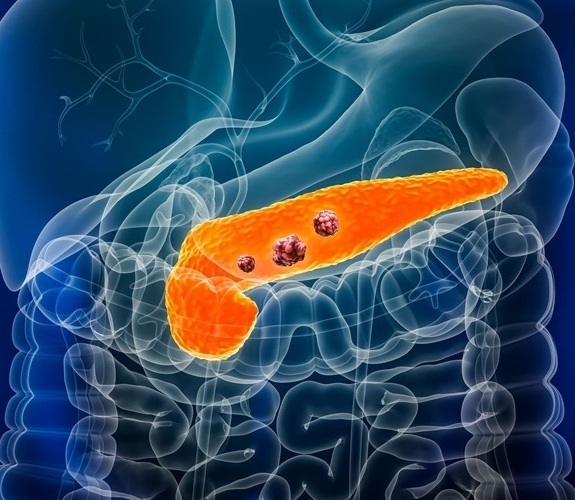
New Biomarker Panel to Enable Early Detection of Pancreatic Cancer
Pancreatic cancer (PC) has one of the worst prognoses globally, with only 13% of diagnosed patients surviving for five years or more. In Ireland, there are about 900 cases of pancreatic cancer annually,... Read more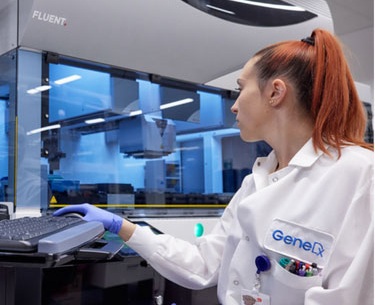
Ultrarapid Whole Genome Sequencing for Neonatal and Pediatric Patients Delivers Results In 48 Hours
Genetic diseases are the leading identifiable cause of infant mortality, and early diagnosis is crucial to improve patient outcomes. In the neonatal and pediatric intensive care units (NICU and PICU),... Read more
AI-Enabled Blood Test Demonstrates Diagnostic, Prognostic and Predictive Utility Across Cancer Continuum
Cancer remains a major challenge in healthcare due to difficulties in early detection and accurate diagnosis. Many cancers are diagnosed at advanced stages, limiting treatment options and impacting survival rates.... Read moreHematology
view channel
Disposable Cartridge-Based Test Delivers Rapid and Accurate CBC Results
Complete Blood Count (CBC) is one of the most commonly ordered lab tests, crucial for diagnosing diseases, monitoring therapies, and conducting routine health screenings. However, more than 90% of physician... Read more
First Point-of-Care Heparin Monitoring Test Provides Results in Under 15 Minutes
Heparin dosing requires careful management to avoid both bleeding and clotting complications. In high-risk situations like extracorporeal membrane oxygenation (ECMO), mortality rates can reach about 50%,... Read moreImmunology
view channel
Evolutionary Clinical Trial to Identify Novel Biomarker-Driven Therapies for Metastatic Breast Cancer
Metastatic breast cancer, which occurs when cancer spreads from the breast to other parts of the body, is one of the most difficult cancers to treat. Nearly 90% of patients with metastatic cancer will... Read more
Groundbreaking Lateral Flow Test Quantifies Nucleosomes in Whole Venous Blood in Minutes
Diagnosing immune disruptions quickly and accurately is crucial in conditions such as sepsis, where timely intervention is critical for patient survival. Traditional testing methods can be slow, expensive,... Read moreMicrobiology
view channel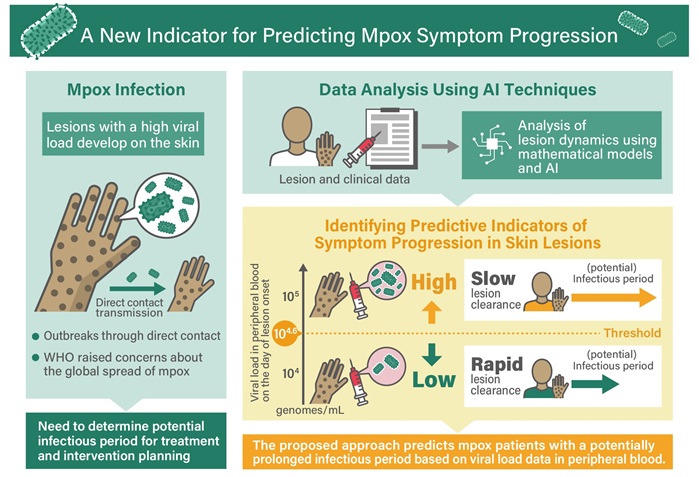
Viral Load Tests Can Help Predict Mpox Severity
Mpox is a viral infection that causes flu-like symptoms and a characteristic rash, which evolves significantly over time and varies between patients. The disease spreads mainly through direct contact with... Read more
Gut Microbiota Analysis Enables Early and Non-Invasive Detection of Gestational Diabetes
Gestational diabetes mellitus is a common metabolic disorder marked by abnormal glucose metabolism during pregnancy, typically emerging in the mid to late stages. It significantly heightens the risk of... Read morePathology
view channel
AI Accurately Predicts Genetic Mutations from Routine Pathology Slides for Faster Cancer Care
Current cancer treatment decisions are often guided by genetic testing, which can be expensive, time-consuming, and not always available at leading hospitals. For patients with lung adenocarcinoma, a critical... Read more
AI Tool Enhances Interpretation of Tissue Samples by Pathologists
Malignant melanoma, a form of skin cancer, is diagnosed by pathologists based on tissue samples. A crucial aspect of this process is estimating the presence of tumor-infiltrating lymphocytes (TILs), immune... Read more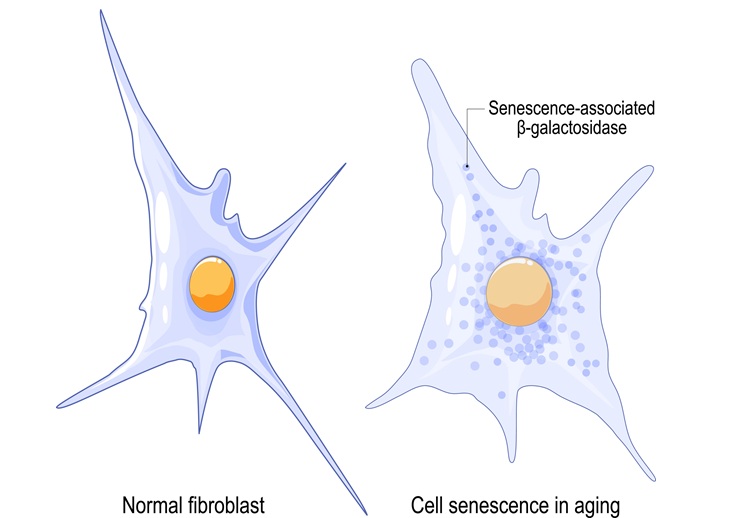
AI-Assisted Technique Tracks Cells Damaged from Injury, Aging and Disease
Senescent cells, which stop growing and reproducing due to injury, aging, or disease, play a critical role in wound repair and aging-related diseases like cancer and heart disease. These cells, however,... Read more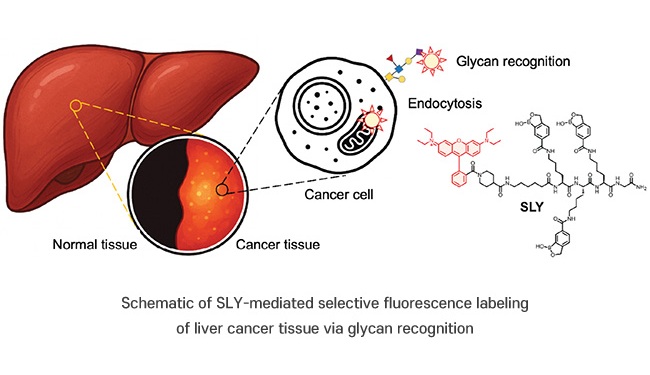
Novel Fluorescent Probe Shows Potential in Precision Cancer Diagnostics and Fluorescence-Guided Surgery
Hepatocellular carcinoma (HCC), a common type of liver cancer, is difficult to diagnose early and accurately due to the limitations of current diagnostic methods. Glycans, carbohydrate structures present... Read moreTechnology
view channel
Multifunctional Nanomaterial Simultaneously Performs Cancer Diagnosis, Treatment, and Immune Activation
Cancer treatments, including surgery, radiation therapy, and chemotherapy, have significant limitations. These treatments not only target cancerous areas but also damage healthy tissues, causing side effects... Read more
Ultra-Sensitive Biosensor Based on Light and AI Enables Early Cancer Diagnosis
Cancer diagnosis is often delayed due to the difficulty in detecting early-stage cancer markers. In particular, the concentration of methylated DNA in the bloodstream during the early stages of cancer... Read moreIndustry
view channel
2025 COMPAMED Innovation Forum Highlights Pioneering Work in Cancer Diagnostics
Cancer cases are among the biggest challenges faced by global healthcare systems. The incidence has risen in recent decades, not least on account of demographic change and escalating risk factors.... Read more
Quanterix Completes Acquisition of Akoya Biosciences
Quanterix Corporation (Billerica, MA, USA) has completed its previously announced acquisition of Akoya Biosciences (Marlborough, MA, USA), paving the way for the creation of the first integrated solution... Read more
Lunit and Microsoft Collaborate to Advance AI-Driven Cancer Diagnosis
Lunit (Seoul, South Korea) and Microsoft (Redmond, WA, USA) have entered into a collaboration to accelerate the delivery of artificial intelligence (AI)-powered healthcare solutions. In conjunction with... Read more














